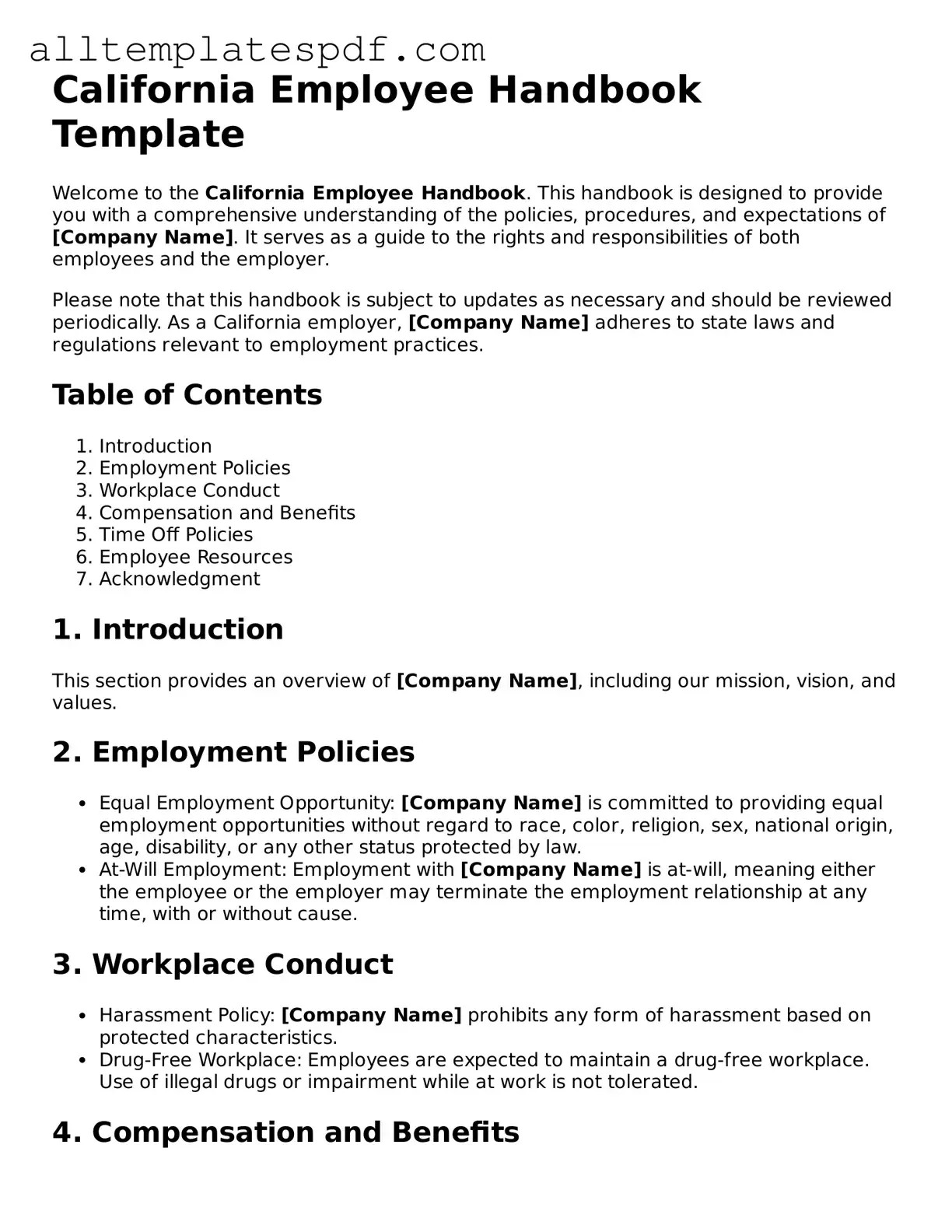When filling out the California Employee Handbook form, many individuals inadvertently make mistakes that can lead to confusion or even legal issues down the line. One common error is not reading the instructions thoroughly. Each section of the form has specific requirements, and skipping over these can result in incomplete or incorrect submissions.
Another frequent mistake is failing to update personal information. Employees often forget to include changes in their address, phone number, or emergency contacts. This oversight can hinder communication during critical situations.
Some people neglect to sign and date the form. A signature not only shows acknowledgment but also indicates that the employee agrees to the policies outlined. Without this, the document may not hold the intended weight.
Additionally, misunderstanding the policies can lead to errors. Employees might misinterpret rules regarding vacation time or sick leave, leading to discrepancies between what they believe they are entitled to and what the company actually offers.
In some cases, individuals might skip sections that they think are not relevant to them. However, every part of the handbook serves a purpose. Omitting information can create gaps in understanding company expectations.
Another common issue is providing inaccurate or outdated information regarding previous employment. This can affect the verification process and create complications for both the employee and employer.
Some employees may also fail to ask questions about unclear policies. If something is not understood, it is crucial to seek clarification. Ignoring uncertainties can lead to misunderstandings later on.
Moreover, individuals sometimes overlook the importance of reviewing the entire handbook. A quick skim is not enough. Taking the time to read through the policies ensures that employees are fully informed about their rights and responsibilities.
Finally, failing to keep a copy of the completed form is a mistake that can have consequences. Retaining a personal copy ensures that employees have a reference point for what they agreed to and can help resolve any future disputes.
By being aware of these common pitfalls, employees can navigate the California Employee Handbook form more effectively. Careful attention to detail can prevent future complications and foster a better understanding of workplace policies.
